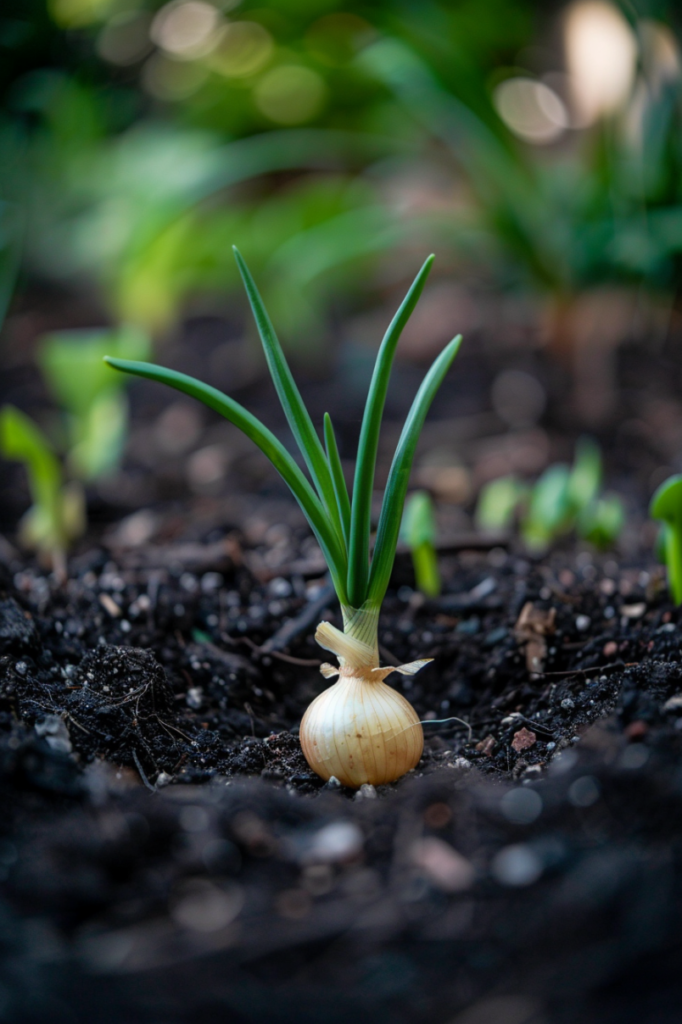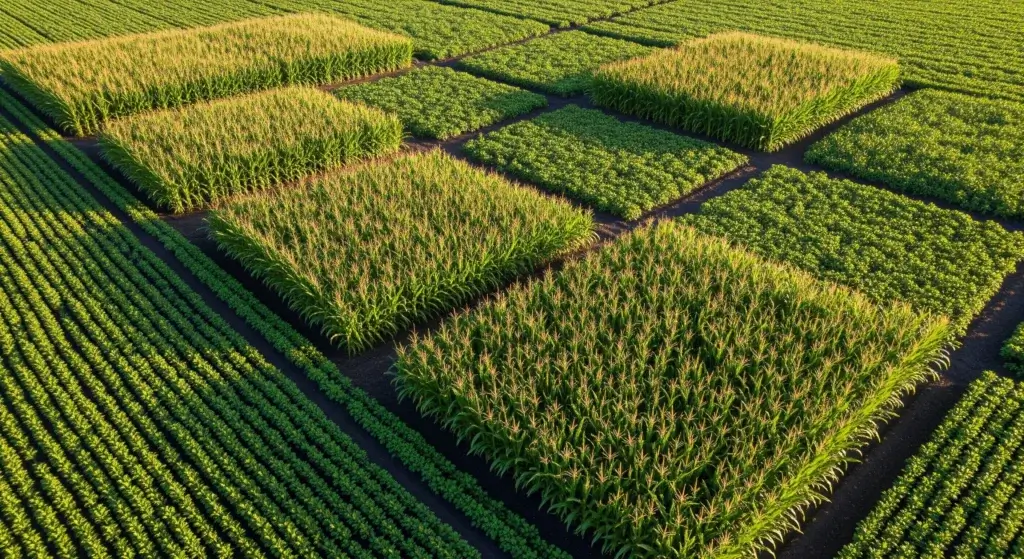
Growing onions from seed can be a fulfilling endeavor for gardening enthusiasts.
Beyond the satisfaction of harvesting your own fresh onions, it offers a chance to explore diverse onion varieties.
In this blog post, we’ll delve into the advantages of starting onions from seed, tips for selecting the right onion variety, and a detailed guide on planting your onion seeds.
Benefits of Growing Onions from Seed
Growing onions from seed offers numerous advantages over other methods like using sets or transplants.
Let’s explore these benefits in detail:
Variety selection
When you grow onions from seed, you have access to a broader array of onion varieties.
This allows you to select onions that best suit your growing conditions and taste preferences.
You might discover unique varieties not readily available as sets or transplants, enhancing the diversity in your garden.
- Read also: The No-Soil Solution: How to Grow Onion in Water
- Read also: A Comprehensive Guide: Tips on How to grow Lemon balm
Economical
Starting onions from seed tends to be more cost-effective than purchasing sets or transplants.
Buying seeds in bulk reduces the cost per unit, making it a budget-friendly option for gardeners looking to maximize their resources.
Reduced flowering
Onions grown from seed are less prone to bolting or sending up flower stems compared to transplanted bedding onions.
This decreased likelihood of flowering contributes to better bulb onion quality, as energy is directed towards bulb formation rather than seed production.
Faster germination and growth
Onion seeds germinate quickly and seedlings establish faster than sets, providing an early start to the growing season.
This accelerated growth rate gives seed-started onions a competitive edge in terms of development and yield potential.
Lighter soil
Seed-starting typically involves using lighter potting soil compared to the heavier soil often found in onion sets.
This lighter soil facilitates easier transplanting and minimizes stress on seedlings during the establishment phase.
Shorter growing season
Onion sets offer a shorter growing season compared to seed-grown onions.
This advantage is particularly beneficial in regions with limited growing seasons, where the earlier harvest of sets ensures a successful onion crop.
Higher dry matter content
Onions derived from sets tend to have a higher dry matter content compared to those grown from seed.
This difference can influence factors such as flavor, texture, and storage longevity, depending on culinary preferences and intended usage.
Variety-specific suitability
Some onion sets are bred specifically for their suitability as sets, resulting in varieties with tailored genetics and characteristics optimized for this method of cultivation.
This specialization can offer unique qualities and performance advantages in the garden.
Full traceability
Quality onion sets are produced under stringent quality control protocols, ensuring the health and integrity of the delivered consignments.
This traceability provides assurance to growers regarding the quality and reliability of the onion sets they use in their gardens.
Early harvest
Onions grown from sets typically reach maturity and can be harvested earlier than seed-grown onions.
This early harvest allows for an expedited start to the growing season, providing gardeners with a timely yield of fresh onions.

How to Choose Your Onion Variety
Onion type
There are different types of onions, such as yellow, red, and white onions.
Each type has its unique flavor, color, and storage potential.
For example, yellow onions have a strong flavor and are suitable for stews, curries, and sauces.
Red onions are sweeter and are ideal for salads and guacamole.
White onions have a delicate flavor and are commonly used for thickening sauces and in salads and Mexican dishes.
Growing season
Some onion varieties are better suited for specific growing seasons.
For example, long-day onions require at least 14 hours of daylight to start bulbing, making them suitable for northern regions.
Short-day onions need at least 10 hours of daylight and are best for regions with shorter growing seasons.
Size and yield
Consider the size of the onions you want to grow and the yield you expect.
For example, the ‘Kelsae Sweet Giant’ variety holds the Guinness World Record for the biggest onion, weighing up to 15 lb 5.5 oz and with a whopping 33 inches diameter.
Flavor and usage
Choose an onion variety based on the flavor and usage in your recipes.
For example, yellow onions are the most commonly used type and have a strong flavor, while red onions are sweeter and are an excellent choice for salads.

Gathering Supplies
- Seed starting trays or pots: Choose a seed starting tray or pot that is the appropriate size for your onion seeds.
- Seed starting mix: Use a high-quality seed starting mix to ensure successful germination.
- Watering can: A watering can is essential for watering your onion seeds.
- Grow lights (optional): If you do not have enough natural light, consider using grow lights to help your onion seeds germinate.
- Fertilizer (optional): Use a balanced fertilizer to provide your onion seeds with the necessary nutrients for growth.
- Shovel: A shovel is needed for transplanting your onion seedlings into the garden.
- Rake: A rake is useful for preparing the garden bed for your onion seedlings.
Step by Step How to Plant Your Onion Seeds
Here’s a detailed step-by-step guide on planting onion seeds:
Choose the right time
Start onion seeds indoors approximately 8-10 weeks before your region’s last frost date.
This timing ensures that seedlings will be ready for transplanting into the garden when the weather is suitable.
Gather your supplies
You’ll need several supplies to get started, including a container (such as a seed starting tray or pot), seed starting mix, a watering can, and optionally, a heat mat to promote germination.
Prepare the container
Fill your chosen container with seed starting mix, ensuring it is well-draining and free of any clumps or debris.
Moisten the mix with warm water until it reaches a damp but not soggy consistency.
Sow the seeds
Using your finger or a small tool, create a furrow in the soil approximately 1/4 inch deep and 1 inch wide.
Space the furrows appropriately to allow for adequate growth, and sow the onion seeds evenly along the furrow, spacing them about 1 inch apart.
Cover the seeds
Once the seeds are sown, cover them lightly with a thin layer of seed starting mix.
Gently press down on the soil to ensure good contact between the seeds and the growing medium.
Water the seeds
Carefully water the newly planted seeds, ensuring that the soil is evenly moistened but not waterlogged.
A gentle spray from a watering can or misting bottle works well for this purpose.
Provide warmth
To promote germination, place the container in a warm location with temperatures between 70-75°F (21-24°C).
If necessary, you can use a heat mat to maintain consistent warmth around the seeds.
Monitor germination
Onion seeds typically germinate within 1-2 weeks under optimal conditions.
Keep an eye on the container, checking regularly for signs of germination such as tiny seedlings emerging from the soil.
Transplant seedlings
Once the seedlings have developed 2-3 sets of true leaves, they are ready to be transplanted into a garden bed.
Prepare the planting area by loosening the soil and amending it with compost if needed.
Space the seedlings approximately 6 inches apart to allow for proper bulb development.
Hardening off
Before transplanting seedlings into the garden, gradually acclimate them to outdoor conditions through a process called hardening off.
This involves exposing the seedlings to outdoor elements for progressively longer periods each day, starting with a few hours of exposure and gradually increasing over the course of a week or two.
This helps prevent shock and ensures successful establishment in the garden.

Tips and Troubleshooting
Tips for success
- Seed depth: Don’t bury your onion seeds too deep! They are tiny and need light for germination. Aim for a shallow planting depth of ¼ – ½ inch.
- Temperature: Onions prefer warm temperatures for germination (around 70°F). If your starting location is cooler, consider using a heat mat under your seed trays.
- Light up those seedlings: Once seedlings emerge, they crave plenty of bright light. Supplement with grow lights if needed to provide 14 hours of light daily.
- Watering wisdom: Consistent moisture is key, but avoid overwatering. Aim for evenly moist soil, not soggy.
- Thinning: Don’t overcrowd your seedlings! Thin them out once they have a few sets of true leaves. This allows for proper air circulation and prevents stunted growth.
- Mulching: Apply a layer of mulch around your onions after transplanting outdoors. Mulch helps retain moisture, suppress weeds, and regulate soil temperature.
Troubleshooting common problems
- Leggy seedlings: This is caused by insufficient light. Ensure your seedlings receive enough bright light or use grow lights to promote strong, sturdy growth.
- Yellowing leaves: This could be a sign of nutrient deficiency. A light feeding with a balanced fertilizer can help.
- Bolting: Bolting refers to onions producing flowers prematurely instead of bulbs. This can be caused by exposure to cold temperatures or starting seeds too early.
- Pests and diseases: Keep an eye out for common onion pests like thrips and onion maggots. Use organic methods like insecticidal soap or neem oil for control.

- Read also: A Comprehensive Guide: How To Grow Brussels Sprouts
- Read also: Step By Step on How to Grow Blackcurrants
Conclusion
Growing onions from seed is a rewarding experience for gardeners.
By following the steps outlined in this blog post, you can enjoy fresh, homegrown onions and experiment with various onion varieties.
FAQs
Onion seeds typically take 7-14 days to germinate, depending on the variety and growing conditions.
Yes, you can grow onions from store-bought onions, but it is not recommended, as store-bought onions may carry diseases that can harm your onion crop.
Once your onion seedlings have 2-3 sets of leaves, it is time to transplant them into the garden.
Prepare the garden bed by removing weeds and other debris, and loosening the soil with a rake.
Yes, you can grow onions in a container, as long as it is large enough to accommodate the onion plant’s root system.



